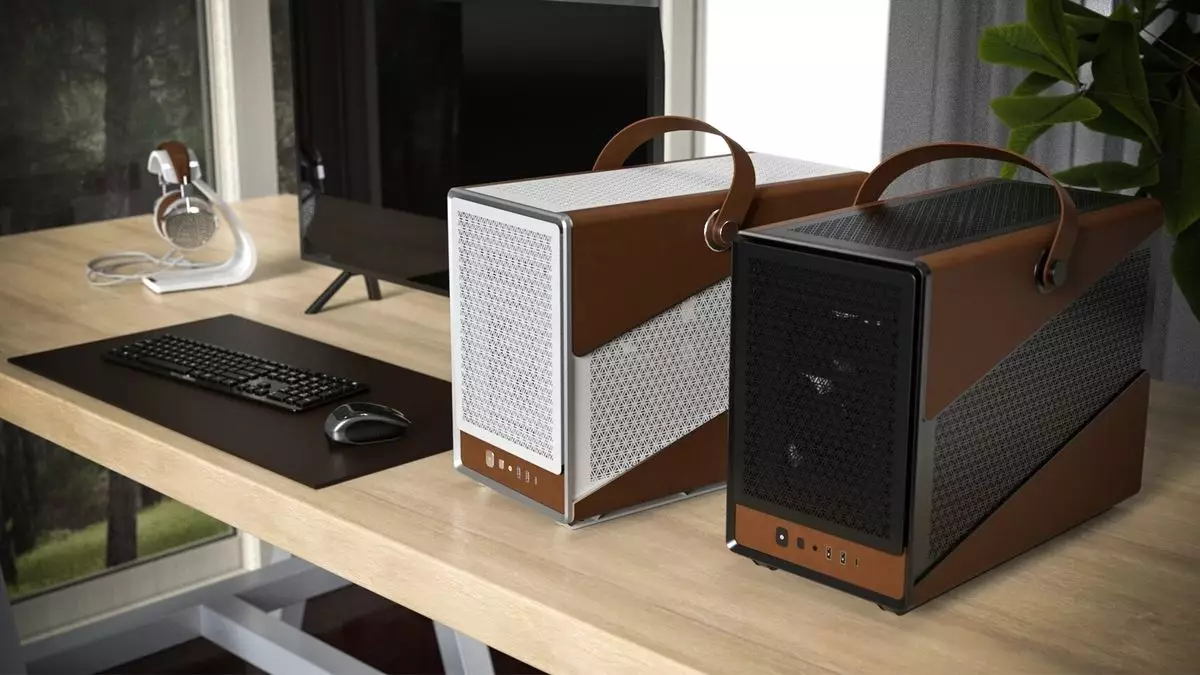The world of PC cases has evolved dramatically over the decades, moving away from the monotonous, utilitarian designs that once dominated the market. In this progression, we find ourselves presented with an array of eccentric designs that ambitiously push the boundaries of creativity. One notable example is the Montech Heritage PC case. While it attempts to blend modern functionality with nostalgic aesthetic cues, it raises questions about taste and practicality that are worth exploring.
In an era where minimalism is often celebrated, the Montech Heritage takes a decidedly maximalist approach, drawing inspiration from the flamboyant design trends of the ’60s and ’70s. This retro flair is evident in its diagonal slashes and unconventional use of materials, most notably the leather-wrapped exterior. While some may argue that this add a unique character to the design, others may view it as a step too far into kitschy territory. The choice to adorn a PC case in leather can come off as impractical—especially considering the primary function of a PC case is to house components safely and efficiently, rather than to serve as a piece of furniture art.
Moreover, the design features a range of cutouts intended for ventilation. While this is a practical aspect, there’s a line between functional design and gratuitous decoration. The juxtaposition of a leather exterior with strategically placed ventilation holes sparks a dialogue about coherence in design—a thematic consistency that may be missing here. For a discerning consumer, the nostalgia may not outweigh the potential awkwardness of marrying high-end materials with a tech product.
Examining the case from a practical perspective, the Montech Heritage offers impressive support for cooling components, including potential configurations for a 360mm radiator. This feature indicates that, beneath its peculiar exterior, the case does make an effort to cater to the needs of performance-oriented builders. However, the case is designed for Micro ATX and Mini ITX motherboards, potentially limiting the audience to a specific segment of PC builders.
One notable strength lies in the interior space of the case. It can accommodate GPUs of up to 400mm, which is certainly generous by modern standards. This flexibility indicates that those who do choose to accept its unique aesthetic may also appreciate the practicality embedded within, making it a potential choice for those seeking both style and substance.
With a price tag of $89 for the basic model, the Montech Heritage presents an interesting proposition in terms of value. It conveys a sense of affordability for those who admire distinctive designs while also not wanting to break the bank. However, it’s important to consider who the likely buyers are. The demographic appealing to this case may overlap with those who savor retro styles, yet it’s a small niche that may not translate widely across the consumer spectrum.
Furthermore, the question of material—specifically, whether the leather is genuine or synthetic—could alienate potential customers. Ethical considerations in consumer choices play an increasingly significant role, especially among environmentally conscious buyers. This aspect might narrow the case’s appeal even further, as vegans and those averse to animal products may be discouraged from purchasing.
The Montech Heritage PC case is a fascinating case study in how design themes can evoke strong reactions, oscillating between adoration and distaste. While it successfully introduces a daring aesthetic into an often bland market, it simultaneously risks being perceived as impractical or overly kitschy. Its performance specs are commendable, but the design sensibility may not resonate with every prospective buyer.
As is often the case with products that bravely push the design envelope, the Montech Heritage elicits both intrigue and skepticism. Whether it will win over the tastes of consumers remains to be seen, but it undeniably serves as a reminder of how personal tastes profoundly influence the perception of technology and design.

